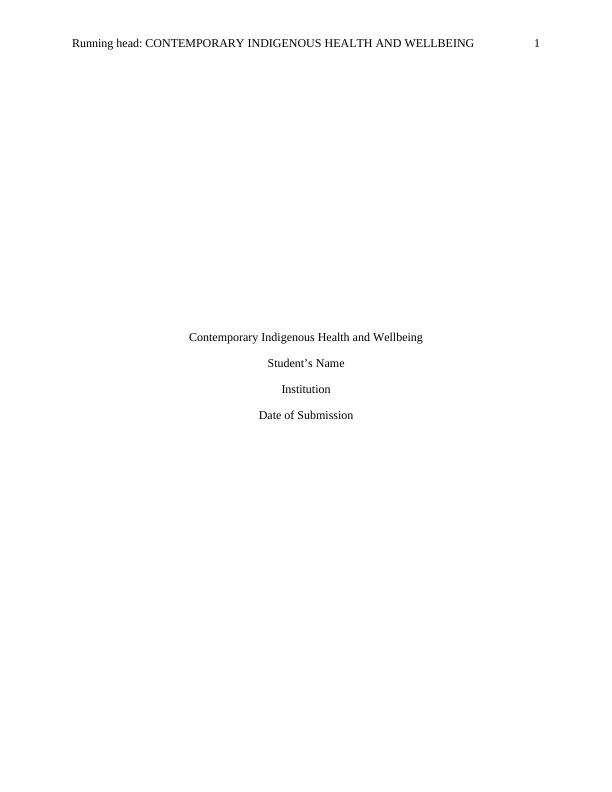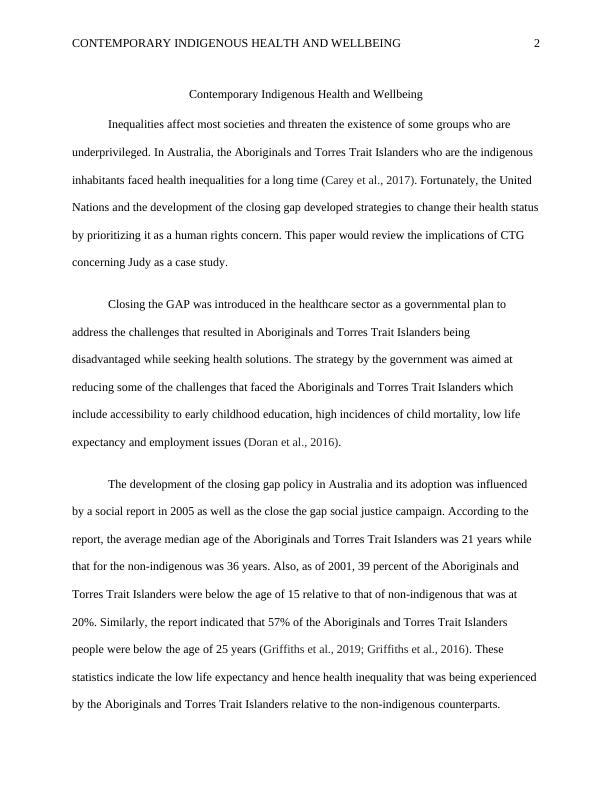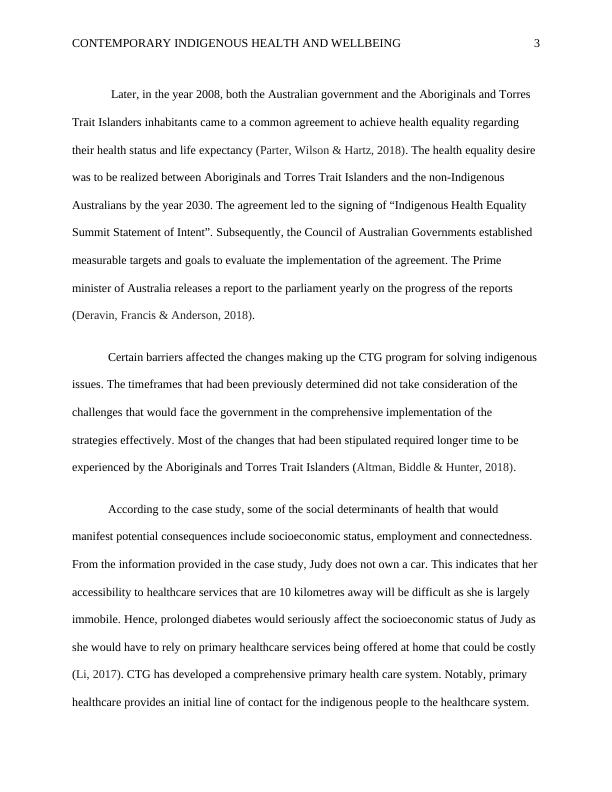Contemporary Indigenous Health and Wellbeing| Report
To explore the impact of the ‘Closing the Gap’ policy on Aboriginal & Torres Strait Islander People’s health outcomes.
9 Pages2535 Words30 Views
Added on 2022-09-26
Contemporary Indigenous Health and Wellbeing| Report
To explore the impact of the ‘Closing the Gap’ policy on Aboriginal & Torres Strait Islander People’s health outcomes.
Added on 2022-09-26
ShareRelated Documents
End of preview
Want to access all the pages? Upload your documents or become a member.
Contemporary Indigenous Health and Wellbeing
|10
|2616
|445
Contemporary Indigenous Health and Well-being | Essay
|8
|2220
|524
Contemporary Indigenous Health and Wellbeing
|8
|1998
|199
Assignment about Closing The Gap (CTG)
|9
|2421
|23
Sample Assignment on Being Indigenous
|7
|2109
|174
Exploring the impact of Policy on Health | Essay
|9
|2526
|15



